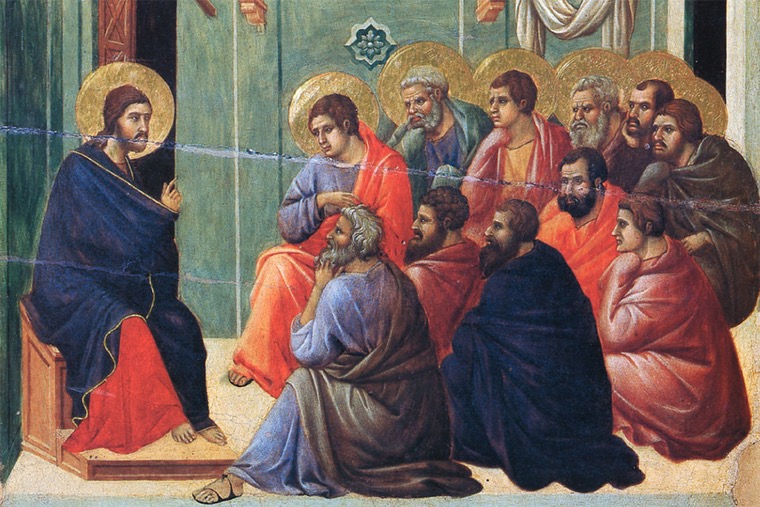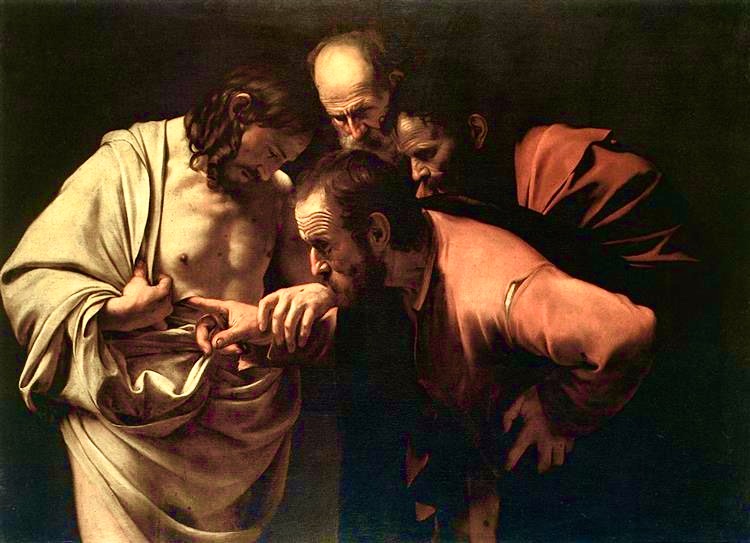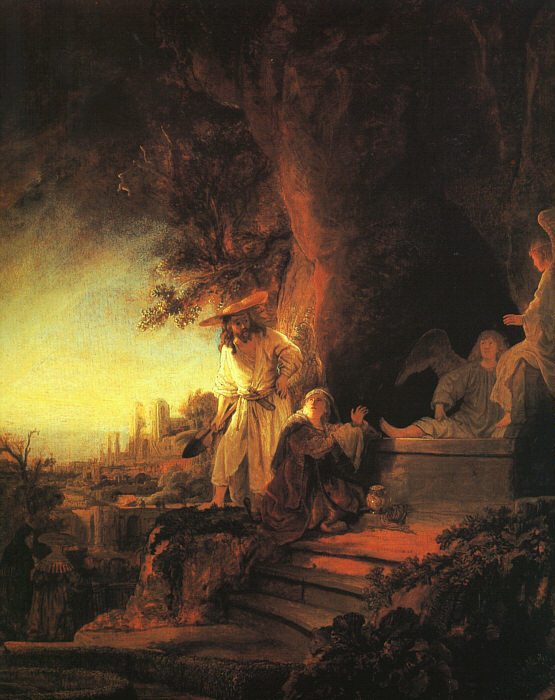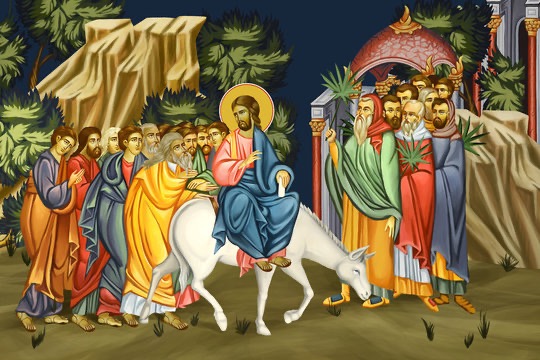
A sermon delivered April 21, 2024, Earth Care Sunday, First Presbyterian Church of Glens Falls
His name was Iron Eyes Cody and to this day, some 54 years later, his image is burned into my mind. He is a Native American fully dressed in leathers slowly paddling his birch bark canoe down a serene river of the likes we have around our beautiful home. As we follow him in his canoe, the river grows larger, more industrial, and now his canoe is skimming over trash that others have left. In a scene that looks like the Hudson River down state in the city, he comes to shore and pulls his canoe onto a trash-hewn waterside. His face slowly pans his surroundings, and we see high smokestacks polluting the air, a trashed river, and cars screaming down a road. As Iron Eyes Cody is watching the cars, some guy throws out a bag of trash that hits at his feet and scatters everywhere. The camera pulls into his his face and as he turns, there is a single tear flowing down his face. A voiceover begins to say, “Some people grew up and have a deep and abiding respect for the natural beauty of our land. Others don’t. People start pollution. People can stop it.”[1] Do you remember seeing that ad?
I recently pulled it up and watched it again after all these years and though the music is overly dramatic, the image has never left me. Even as a 10-year-old I had the sensibilities to realize the tear coming down Iron Eyes Cody’s face was as much a theological statement as it was a public service announcement for the American Ad Council: Our earth, our water, mountains, the oceans, our rivers are all given to us by God. Humankind in all of its brilliance or cleverness cannot even think of creating such a thing as the Adirondack Mountains. Even Thomas Jefferson described Lake George as the Queen of the American Lakes.[2] This beautiful place we are blessed to call home was created by Someone Other than us. As we will hear from scripture, our home is a gift from a very gracious God. Turn in your Bible to Genesis 2. I am reading verses 4-9 and then 15-17. Listen to the Word of the Lord.
Genesis 1:4-9, 15-17
4 These are the generations of the heavens and the earth when they were created. In the day that the Lord God made the earth and the heavens, 5when no plant of the field was yet in the earth and no herb of the field had yet sprung up—for the Lord God had not caused it to rain upon the earth, and there was no one to till the ground; 6but a stream would rise from the earth, and water the whole face of the ground— 7then the Lord God formed man from the dust of the ground, and breathed into his nostrils the breath of life; and the man became a living being. 8And the Lord God planted a garden in Eden, in the east; and there he put the man whom he had formed. 9Out of the ground the Lord God made to grow every tree that is pleasant to the sight and good for food, the tree of life also in the midst of the garden, and the tree of the knowledge of good and evil. 15 The Lord God took the man and put him in the garden of Eden to till it and keep it. 16And the Lord God commanded the man, ‘You may freely eat of every tree of the garden; 17but of the tree of the knowledge of good and evil you shall not eat, for in the day that you eat of it you shall die.’ [3]
Genesis chapter one describes the creation of the Cosmos and the systemic order of the universe. Chapter two begins to zero-in on humankind’s place in that order. Old Testament Scholar, Walter Brueggemann, points out that immediately following this majestic creation story in chapter one, our text from chapter two, “Focuses on human persons as the (both) the glory and central problem of creation.”[4] Brueggemann points out that people are inheritors of God’s gracious gift of creation. Our world is not our making; it’s fully God’s. God places humankind in the world to care for the earth and the creatures in it. “The destiny,” Brueggemann says, “of the human creation is to live in God’s world, with God’s other creatures, on God’s terms.”[5] Whereas out culture has read the first two chapters of Genesis through the lenses of evil/fall/sin/death/sex/murder, at its most basic level, this part of the Bible is talking about relationship: God’s relationship with creation, including ourselves, as well as how we live responsibly as community within God’s creation.
In verses 4-9, three things quickly happen. God forms a creature from the mud that is entirely dependent upon God. God plants a garden as a good comfortable, nourishing place for humankind to live. Finally, God identifies two trees which provide the framework for humankind’s future relationship with God. And then verses 15-17 further set out the parameters for our relationship with God and with creation.
Verse 15 shows us God gives us something to do – a vocation. We are asked to till and keep the garden God made. The words ‘till’ and ‘keep’ have subtle meanings as so many Hebrew words do. The word for ‘till’ literally means to be in the service of it. Humankind serves the creation. It can also mean to hold it in adoration as we would in worship. The word ‘keep’ is not to be taken as a possessive. The word actually means to set a watch over and guard. Those two words sum up our vocation as it relates to God’s creation: You and I are to be of service to the earth and environment and we are its sentinels and have been given the responsibility to guard it.
Verse 16 is another expression of God’s grace to us: We are given permission and freedom to fully engage and enjoy the creation in the garden. This granted freedom to us is then followed up with the setting of a boundary in verse 17: There are two trees in the garden. We can eat from one but not the other. The temptation as readers is to begin focusing on the trees such as, “Why did God put two trees there in the first place if we can’t eat from it?” If that is the line of questioning we take, then we are totally missing the point. You see it’s not about the trees; it’s about our obedience in following God’s prohibition and honoring God’s boundary.
God has given us a job to do and that is serve the land and guard it. We have permission to enjoy the creation and what it provides us. We are also given a boundary not to step over. Brueggemann goes on to say, “The primary human task is to find a way to hold these three facets of divine purpose together,” i.e. vocation, permission, and prohibition. “Any two of them without the third is surely to pervert life. It is telling and ironic that in the popular understanding of the story, little attention is given to the mandate of vocation or the gift of permission. The divine will for vocation and freedom has been lost. The God of the garden is chiefly remembered as the one who prohibits. But the prohibition makes sense only in terms of the other two.”[6]
Yup. That’s a problem, isn’t it? We see and hear in the story what we want to see and hear in a story. For centuries preachers and teachers have focused solely on the “Thou shalt not eat of the tree” and have entirely glossed over our vocation to serve our environment and guard it. We have read the word “to keep the earth” as to have dominion over it which in our mind is use it up and consume it the way we want to. Look how far that misreading and misunderstanding a biblical text has gotten us.
Prior to moving here last September when I lived in the self-acclaimed, “The Venice of America,” I remember the ocean water off the coast of Fort Lauderdale was consistently reaching over 100 degrees. I remember on April 12th last year 26 inches of rain fell in 18 hours flooding the city. On the days I wanted to do anything in the water around there, I remember having to use an app that reported the fecal coliform in the Venice of America’s canals, waterways, and beaches. All this occurs as a result of our not serving the environment and guarding it.
Look at this winter up here. People cannot sell their snowmobiles fast enough because the winters are getting warmer. The Ice Festival in Lake George is more of a water festival. All this occurs as a result of our not serving our environment and guarding it.
The Environmental Protection Agency has tested a third of the US water systems and have discovered that 70 million people are exposed to toxic chemicals in our drinking water. It’s on pace to indicate that 60% of our nation’s water is contaminated with forever chemicals like microplastics and PFAs.”[7] All of this occurs because it is indicative of our not serving our environment and guarding it.
Years ago, playwright and author, Thornton Wilder, wrote a book entitled, The Eighth Day. Aside from being a murder mystery, the story reflects Wilder’s religious conviction in that it references the biblical story of the seven-day creation of the world. The novel begins when one of the characters, a Dr. Niles, declares, “That the world is in the eighth day of creation when man (sic) is left to continue to make progress.”[8]
Let the irony of that comment sink in a moment.
Beloved, we are the children of the eighth day. God has given us a job to do. God wants us to enjoy the world God created but God has set boundaries for us to follow in doing so. It’s time for us to start daily doing the job we were given as children of the eighth day. Today, in whatever small way each of us can, let’s live as children of the eighth day and serve the land and guard it as our scripture demands us. In the Name of the One who is, was, and is to come. Amen.
© 2024 Patrick H. Wrisley. Sermon manuscripts are available for the edification of members and friends of First Presbyterian Church of Glens Falls, 8 West Notre Dame Street, Glens Falls, NY 12801 and may not be reproduced or repurposed without permission from the author. All rights reserved.
[1] See https://youtu.be/h0sxwGlTLWw?si=gXwqh538E6t1gSy1.
[2] See https://visitadirondacks.com/about/adirondack-lakes#:~:text=Lake%20George%20was%20nicknamed%20%22the,home%20to%20nearly%20186%20islands.
[3]New Revised Standard Version Bible, copyright © 1989 National Council of the Churches of Christ in the United States of America. Used by permission. All rights reserved worldwide. http://nrsvbibles.org.
[4] Walter Brueggemann, Genesis (Atlanta: John Knox Press, 1982), 41.
[5] Ibid.
[6] Ibid, 46.
[7] The Guardian, February 20, 2024, “At least 60% of US population may face ‘forever chemicals’ in tap water, tests suggest Federal tests of one-third of water systems find 70 million Americans exposed to PFAS – suggesting 200 million affected overall.” Accessed on April 21, 2024. Please see https://www.theguardian.com/environment/2024/feb/20/pfas-us-drinking-water-tap.
[8] See article at the T. Wilder Society at https://www.twildersociety.org/works/the-eighth-day/.




